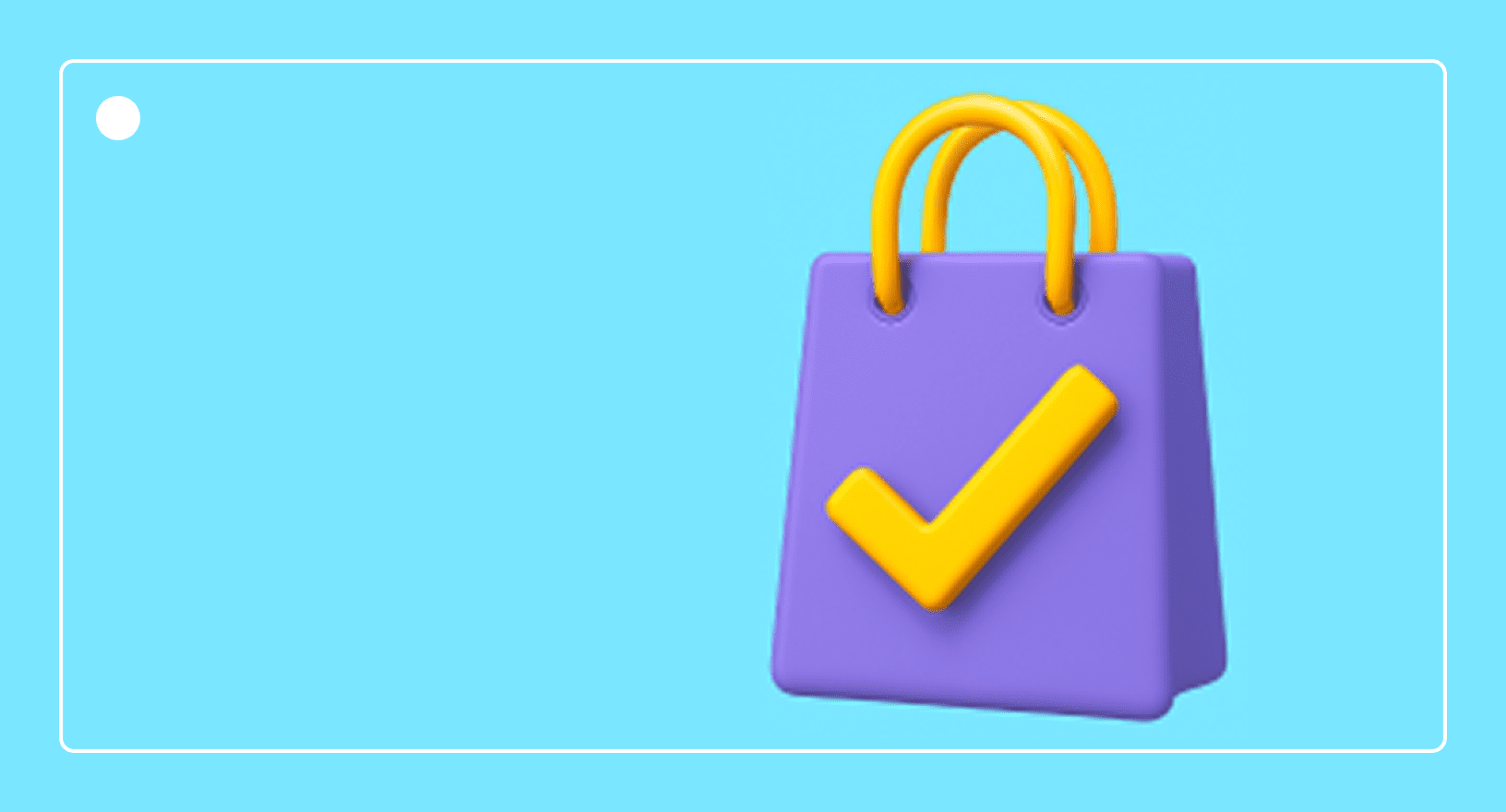Sweden EAA (Tillgänglighetslagen) Compliance Guide
Digital Accessibility
Updated on August 19, 2025
From 28 June 2025, Sweden enforces the European Accessibility Act (Tillgänglighetslagen). If your videos, images, PDFs or checkout are not compliant, you risk fines and retailer rejection. In this article, we explain how you can check your risk in 10 minutes and get a plan to fix it.
Sweden EAA Compliance at a Glance

Enforcement: In effect as of 28 June 2025

Who is affected: Any business selling products or services online in Sweden

Risk for Retailers: Displaying non-compliant content can result in fines up to €200,000

Risk for Brands: Retailer rejection of video and 3D/AR model uploads

Quick win: Get a 10-minute audit of your videos, images, PDFs and 3D models
Whether you’re a brand uploading content or a retailer displaying it, the Swedish EAA applies to you.
• Brands risk rejected uploads and delayed go-live dates.
• Retailers risk fines and legal exposure if non-compliant content slips through.
DemoUp Cliplister protects both sides by enforcing accessibility standards before content reaches product pages.

Most teams do not need a legal seminar. They need a fast way to see what is wrong and a plan to fix it. DemoUp Cliplister audits your e-commerce media against Swedish EAA requirements and helps you remediate quickly so your content goes live on OTTO, MediaMarkt and other retail partners without delays.
What is the European Accessibility Act?
The European Accessibility Act was approved into law in 2019. Founded as an expansion of the European Union (EU) effort to make society more inclusive for persons with disabilities, the EAA aims to ensure that products, services, and public spaces are accessible to everyone within their ability or disability-based usage. It applies to various industries, such as:
- E-commerce
- Banking services
- Public transport
- Digital services/consumer electronics
- Computer Hardware
- Operating systems
- Many more consumer facing products and services.
Enforcement Mechanisms
The EAA is enforced at the national level in each of the EU member states. Their enforcement mechanisms, however, vary from country to country, as fines and other penalties for not complying with the regulations may include one of their respective penalties for noncompliance.
This EAA is a very important piece of legislation which will help in building a society without barriers for persons with disabilities in Sweden and throughout the EU.

How Accessible is Your Media? Download Our Checklist and Find Out!
Download NowHow Will the European Accessibility Act Impact E-Commerce Services in Sweden?
With the EAA, the accessibility directive of e-commerce services, including digital content and services by and for persons with disabilities, shall be provided in Sweden. The main impacts of the European Accessibility Act in Sweden are as follows:
Accessibility of websites and mobile applications (WCAG 2.1 AA): Websites and apps have to be accessible for persons with disabilities, including those who need assistive technologies such as screen readers. Websites and apps must meet the level of accessibility directive part AA of the Web Content Accessibility Guidelines (WCAG) 2.1 and provide related equipment access.
E-commerce checkout processes & digital payments: These include that e-commerce checkout processes must be accessible for persons with disabilities, including those using assistive technologies. This means that checkout processes must be designed in a way that is easy to understand and navigate, and that all payment options must be accessible.
Live chats, phone, and text alternatives: customer support accessibility: Customer support services shall also be available for persons with disabilities using assistive technology. This means that customers will be supported through channels, like live chats and voice and text alternatives, and all customer service representatives must undergo training on accessibility guidelines.
What the EAA Means for Brands in Sweden
- Content must be made compliant so it’s accepted by retailers the first time.
- Avoiding rework or bottlenecks caused by accessibility failures becomes key.
- Your brand’s reputation is on the line; you must stay compliant to avoid legal action and bad press.
- Your D2C webshop must also meet EAA requirements for checkouts, media, and customer support.
What the EAA Means for Swedish Retailers
- Non-compliant content can’t be published which blocks launches and delays category updates.
- The risk of fines up to €200,000 makes accessibility a board-level concern, not just an IT issue.
- Trust and credibility are on the line if customers encounter inaccessible product pages.
- Partner sell-through rates depend on ensuring only compliant assets flow through your systems.
Practical example: An Accessible E-Commerce Journey in Sweden
A user with a visual impairment uses screen readers to browse an online shop. The screen reader reads the product descriptions, the price, and customer reviews. The person can easily add items to their basket and proceed to check out. The checkout process is accessible, and easy for the user to input payment details. The person receives a confirmation email stating their order that the screen reader can read.
The Legislation for the EAA in Sweden
This EAA has been transcribed into Swedish law. This takes effect on products and services making their way to the Swedish consumer services market, regardless of whether these are produced in Sweden or imported from other member states.
Main Authorities that Oversee Compliance in Sweden

The Swedish Agency for Accessible Media (SAMS) supervises the law on web accessibility and availability of some products and services. SAMS gives guidance and support both to businesses and organizations by providing them with what they need to do to comply with the legislation.
The European Accessibility Act in Sweden encompasses diverse items and various accessible products and services such as:
- Information and communication technology (ICT) products and services
- Transportation services
- Public buildings and spaces
- Education and training services
- Financial services
- Health services
Such products and services must be designed, constructed, and made available by persons with disabilities. It involves assistance such as converting materials into alternative formats-such as Braille or audio recordings-as well as related consumer equipment services such as ensuring the accessibility of websites or other online streaming services by persons with disabilities.
Under the legislation, all products or services shall be “accessed and fully utilised by persons with disabilities.” The law known in Sweden as Lagen om tillgänglighet till vissa produkter och tjänster is a substantially full act that aims to ensure the accessibility of persons with disabilities regarding products and services in Sweden.
What are the Requirements for EAA Compliance in Sweden?
Below are the requirements to comply with the EAA in Sweden.
- Digital accessibility (for websites & apps): It is necessary to comply with WCAG 2.1 AA standards.
- Images: All images must have alt-text. Images with text must have sufficient contrast ratios.
- Videos: All videos must be captioned and transcribed.
- 3D Models: All 3D models must have text descriptions.
- PDFs: Make sure the PDFs are accessible, using aspects such as tagging, headings, and alt-text.
- E-commerce and digital payments: The checkout flows must be accessible. Self-service portals must be accessible.
- In-store and electronic communication services: Alternative communication methods such as text, voice, and sign language must be provided.
- Financial and transport sector: Online banking services and payments in the financial sector must be made accessible.
Who Needs to Comply with Swedish Accessibility Laws?
The Swedish Accessibility Act (SFS 2018:1225) aims to facilitate the accessibility of public services in digital format by providing access to people with disabilities. This law applies to all public and private sector organisations that offer digital services to the public.
Large Enterprises vs. Small Enterprises: Does the EAA Apply to Smaller Businesses?
Yes, the EAA in Sweden covers all types of businesses: large enterprises and SMEs. The legislature, however, recognizes that small businesses have fewer resources and capabilities to direct to access. Therefore, the EAA allows small- and medium-sized enterprises to take a more proportionate approach to compliance.
Public or Private Sector: Who Must Legally Comply?
All organisations, whether public or private, must comply with the EAA in Sweden. This includes private businesses, nonprofits, and government agencies. It also affects the following industries:
- E-commerce and digital retail
- Banks and financial institutions
- Transport companies
- Public services
EAA Comparison Guide: Sweden vs Other European Commission Countries
Below is an EAA comparison guide between Sweden’s Lagen om tillgänglighet till vissa produkter och tjänster and other countries’ national digital accessibility laws:
Sweden and the European Accessibility Act: A Progressive but Pragmatic Approach
Sweden has transposed the European Accessibility Act into national legislation with a typically pragmatic Scandinavian approach. Known for its strong social welfare system and commitment to inclusion, Sweden has aligned with EAA requirements while providing clear national guidelines and support for businesses, especially SMEs.
Unlike some member states that are still finalising enforcement frameworks or adopting only minimal EAA provisions, Sweden has moved quickly to integrate the EAA into its existing accessibility ecosystem as part of the Tillgänglighetslagen.
Compared to countries like Germany or France, where implementation has involved more bureaucracy or sector-specific delays, Sweden stands out for its clarity and efficiency. However, like many other states, Sweden is still developing concrete inspection and enforcement procedures, putting it ahead in policy but middle of the pack on practical enforcement.
For those navigating accessibility compliance across Europe, here’s how the EAA is being approached in other key markets:
- European Accessibility Act in France
- European Accessibility Act in Germany
- European Accessibility Act in Italy
- European Accessibility Act in Spain
Risks of Non-Compliance with Swedish Accessibility Requirements
The consequences of not complying with accessibility requirements in Sweden include the following:
- Legal consequences: The fines can vary between SEK 10,000 and SEK 100,000 (approximately $1,000 to $10,000). Individuals with disabilities barred from using a business or service because of access barriers may take legal action against such businesses or services.
- Financial consequences: An accessibility lawsuit may ultimately be won by a business, but it will still have to incur these expenses. Plus, it can result in a shortage of customers or even affect the annual turnover.
- Reputation risks: Reputational damage can also be increased with negative press coverage or customer dissatisfaction for a business rather than improving its effort in bringing new customers. It makes it very difficult to attract and retain employees with disabilities.
Real-Life Examples of Consequences
- In 2019, a major retailer in Sweden was ordered to pay damages of SEK 50,000 (around $5,000) to a woman who was refused access to a store that was not wheelchair accessible.
- In 2020, a Swedish government agency failed to have a website accessible to persons with disabilities and got fines of around SEK 100,000 (approximately $10,000) as a penalty.
Steps to Become Compliant with the EAA in Sweden
Below are the steps needed to become compliant with the European Accessibility Act in Sweden:
1. Perform an Accessibility Audit
Examine your digital assets, including websites, mobile apps, and online documents, and discover possible access barriers. Engage accessibility experts or employ automated tools and services to check for web and app accessibility under European standards and its underlying framework, the Web Content Accessibility Guidelines (WCAG). Document the existing accessibility issues and prioritise them based on severity and their impact on users.
2. Web & Mobile Compliance Implementation
Ensure that websites and mobile apps comply with WCAG 2.1 AA, which contains comprehensive instructions for ensuring content in the digital world is accessible to people with disabilities.
Pay special attention to keyboard navigation, screen reader compatibility, colour contrast, alternative text for images, and clear and concise language. Make digital payments, checkout processes, and direct customer interactions accessible to all users, including those with diverse abilities.
3. Train Teams on Accessibility Best Practices
Train your developers, designers, content creators, and customer support teams on what constitutes good accessibility practice and how that applies to the European Accessibility Act in Sweden. Most importantly, it creates a culture shift towards this ideal such that inclusive design becomes the subject matter of conversations about users and their disabilities. Facilitate ongoing education and development toward meeting standards by making available resources and opportunities for professional development.
4. Work with Accessibility Consultants & Testing Services
In addition, accessibility consultants engage in third-party testing services to provide independent audits and validations regarding your compliance with the EAA. Use them professionally and tap into their experience to advise on how to solve any remaining accessibility challenges.
5. Monitor & Maintain Accessibility Over Time
Regularly check and update your digital assets so they conform over time to accessibility standards and new regulations or guidelines. Create a system for tracking and monitoring accessibility issues and user feedback. Keep enhancing your accessibility programs with their feedback and new ideas coming in with technological advances and digital accessibility’s best practices.
The Future of Accessibility in Sweden: What’s Next After 2025?
For instance, post-2025, enhanced compliance of public bodies with the current laws on accessibility could be seen in Sweden. Enforcement mechanisms and penalty systems could be made stricter for an organization to establish accessibility in their activities.
Another possibility is that there would be accessibility legislation, which would not take effect immediately in the country. At the same time, focus would also be given to small businesses and specific sectors not mandated to comply. Moreover, different processes for monitoring and enforcing compliance could lead to more targeted and effective strategies for the industries.
Technological Advancements
- AI and automation: Artificial intelligence and automation promise a great deal in advancing digital accessibility and the EAA in Sweden. They will help design AI-assisted tools for accessible products. Automating accessibility testing and compliance processes will also help to streamline and hasten making digital platforms more inclusive.
- Emerging technologies: These new and emergent technologies will largely determine what accessibility looks like in Sweden beyond 2025. Such technologies take up a lot of opportunities, as well as challenges, and call for innovation in methods of leveraging them for such purposes as inclusion and maintaining a focus on making all technology advancements accessible.
Inclusive Design and Business
- Business case for accessibility: Inclusive designs allow Swedish businesses to innovate and improve customer service while increasing business outcomes. Accessibility is beyond ethics; it provides good economic value by maximising the customer base and improving a brand’s reputation.
- Changing cultural approaches: Building a more inclusive society with accessible products requires changing cultural approaches in Sweden. Education, awareness campaigns and partnerships between public and private sectors can serve as key enablers of an environment where diversity and inclusivity are valued and entrenched as societal norms.
International Cooperation
- Global accessibility standards: By working with other countries to establish, promote, and meet accessibility standards, Sweden may enhance its profile as an accessibility-oriented country on the world stage. Learning from best practices while also exporting knowledge may further strengthen Sweden’s commitment to an inclusive digital experience.
- Cross-Border Accessibility: Given the global perspective of digital user experience, this poses challenges regarding cross-border accessibility for Sweden. The strategy for ensuring the accessibility of digital products and services to users around the globe is of utmost importance, which requires cooperation with international partners while upholding universally accepted design principles.
How to Pass Swedish EAA Checks Without Delaying Launches
From 28 June 2025, compliance isn’t optional. Brands risk their content being rejected, and retailers face legal fines if they display non-compliant media. Passing Swedish EAA checks requires a solution that works for both sides of the ecosystem.
DemoUp Cliplister ensures your media clears accessibility requirements before it ever reaches the retailer’s site, protecting brands from wasted effort and retailers from regulatory risk.
For Brands
- Upload once, get accepted the first time.
- Cut rework and speed up go-live dates.
- Maintain accessibility without changing workflows.
- Distribute EAA complaint content to 450+ online shops.
For Retailers
- Block non-compliant media automatically.
- Protect against fines and accessibility complaints.
- Keep experiences consistent across all product pages.
- Source only compliant assets directly from brands.
For Both
- Content flows seamlessly from brand to retailer, fully compliant.
- Our EAA-ready video player guarantees accessibility at the point of display.
- Together, brands and retailers eliminate bottlenecks and accelerate time-to-market.
How It Works
- Scan: Analyse your media for captions, transcripts, alt text, contrast and PDF tagging issues.
- Fix: Use auto-generated metadata for videos and 3D models to close compliance gaps quickly.
- Publish: Publish and display content in an EAA-ready video player that passes all accessibility checks.

Wrapping Up
Being informed and proactive in the new legal requirements can improve customer experience and even brand interpretation to potential customers. More about accessibility, e-commerce, and the EAA in Sweden can be accessed through our blog, and our solutions can be found on our website.
Frequently Asked Questions
The penalties for not complying with the EAA in Sweden may include fines, lawsuits, and adverse publicity. The exact penalties would differ in accordance with the degree and nature of the alleged non-compliance.
Major provisions for e-commerce businesses to comply with the European Accessibility Act include providing accessible web content audio visual media services, mobile applications, digital products and comparable services with assistive technologies, giving alternative text to images, subtitles as captions to videos, and providing a clear navigation structure.
Better Content. More Sales.

Fill out the form to discover our end-to-end eCommerce content solutions for brands & shops



